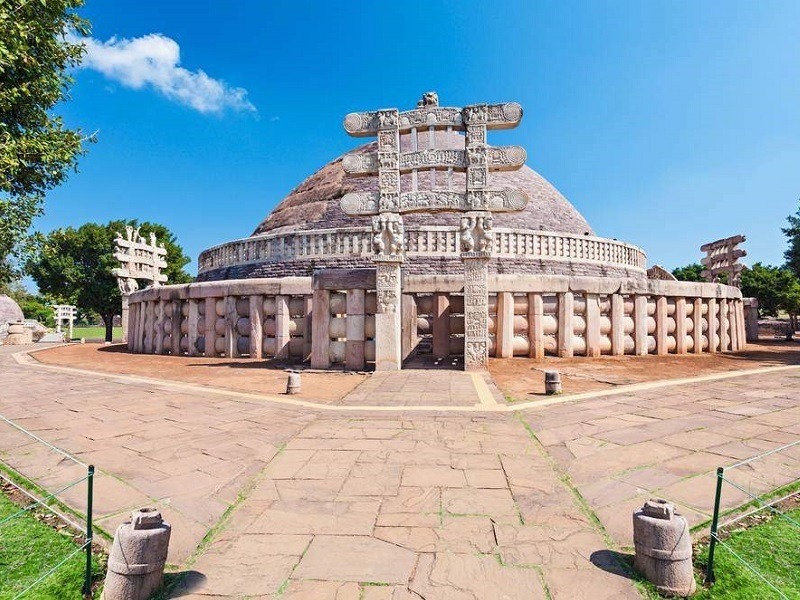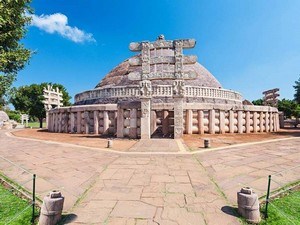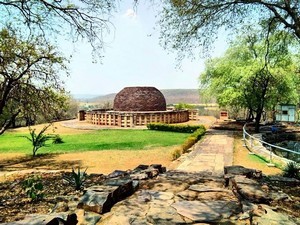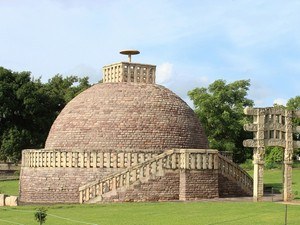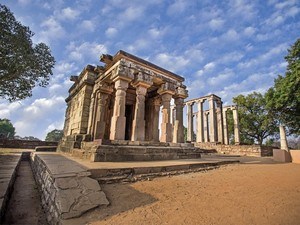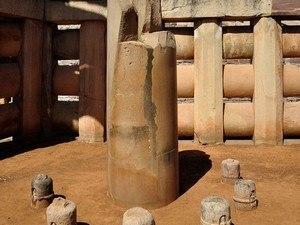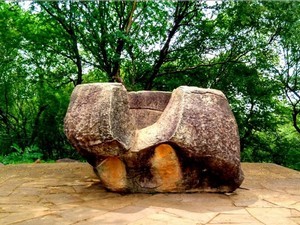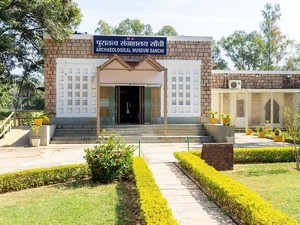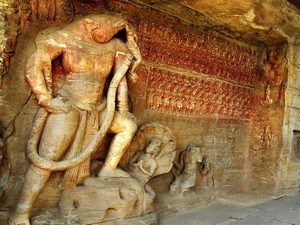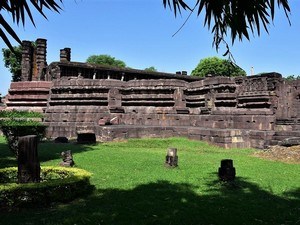The Great Stupa / Sanchi Stupa, Sanchi - Timings, History, Architecture, Best Time to Visit
 #2 of 15 Places to Visit in Sanchi
#2 of 15 Places to Visit in Sanchi
 Distance (From Sanchi Railway Station): 1.5 Kms
Distance (From Sanchi Railway Station): 1.5 Kms
 Trip Duration (Including Travel): 30 Mins
Trip Duration (Including Travel): 30 Mins
 Place Location: Within The Historic Site Of Sanchi
Place Location: Within The Historic Site Of Sanchi
 Transportation Options: Cab / Auto
Transportation Options: Cab / Auto
 Travel Tips: None
Travel Tips: None
At a distance of 1.5 km from Sanchi Railway Station, Sanchi Stupa or the Great Stupa is a Buddhist monument located inside the historic site of Sanchi in Madhya Pradesh. Situated atop a small hillock, it is one of the oldest Buddhist monuments in India, and among the must include places in Sanchi tour Packages.
Designated a UNESCO World Heritage site in 1989, the Great Stupa is the largest stupa as well as the most noteworthy of the structures at the historic site of Sanchi and counted among the best conserved ancient Stupas of central India. Also called Stupa No. 1, the Sanchi Stupa was originally built in the 3rd century BCE by the Mauryan king Ashoka and is believed to house the ashes of the Buddha and his disciples. The stupa was originally a low structure of brick, half the diameter of the present edifice hemispherical in shape with raised terraces at the base. It was damaged in the 2nd century BCE during the rule of Shunga Emperor Pushyamitra Shunga and later his son Agnimitra Shunga ordered to rebuild the structure to its final form in the 1st century BCE. Also, the second and third stupas were built during the later rule of the Shunga Dynasty. Later, the gateways and the balustrade were built and highly decorated during the Satavahana dynasty.
A gem of Buddhist art and architecture, the Great Stupa is 120 feet (37 meters) wide and 54 feet (17 meters) high. The central structure consists of a hemispherical dome on a base, with a relic chamber deep within. The dome is surmounted by a squared railing that can be said to represent the world mountain. A central pillar symbolizes the cosmic axis and supports a triple umbrella structure, which is held to represent the Three Jewels of Buddhism-the Buddha, the dharma, and the sangha. The high circular terrace against the base is accessible by staircases and is designed for worshippers to be able to walk around the stupa.
The entire structure is enclosed by a low wall (vedika), which is punctuated at the four cardinal points by toranas or ceremonial gateways, the highlight of the Great Stupa. Each gateway is made up of two squared posts topped by capitals of sculptured animals or dwarfs, surmounted by three architraves. All the elements are covered with relief sculpture depicting the events of the Buddha's life, Jataka stories, scenes of early Buddhism, and auspicious symbols.
Besides, the stupa is surrounded by other Buddhist monuments such as Temple 18, Gupta Period Temple, Stupa 3, Great Bowl, Stupa 2, Temple and Monastery 45, Chetiyagiri Temple, Shiv Mandir, and Bhero Baba Mandir. Ashoka Pillar, situated next to Stupa No.1, is erected in the 3rd century BC that consists of a shaft and a crown of four lions that stand back to back. Chetiyagiri vihara (resting place), located just outside the complex, was built to house relics of the Buddha's disciples Sariputta and Moggallana, following their return from Britain in 1952. The relics are brought out for public viewing for the Chetiyagiri Vihara festival on the last Sunday of November, which attracts thousands of Buddhist monks and pilgrims.
Sanchi Historic Site Timings: 6.30 AM - 6.30 PM
Sanchi Historic Site Entry : Rs.30 for Indians & SAARC Citizens, & Rs.500 for Foreigners



